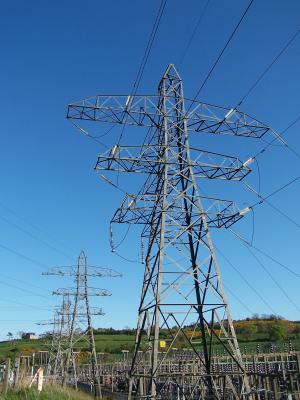
The Utility Regulator is publishing a Conclusions Paper following our consultation on proposed changes to NIE Networks’ Cluster Methodology in its Statement of Connection Charges. We received four responses to the consultation.
These changes were recommended by NIE Networks following their Call for Evidence and further consultation. NIE Networks issued a cluster methodology recommendations paper proposing several changes in relation to matters affecting clusters, including expanding the cluster methodology to incorporate demand connections into clusters.
NIE Networks’ Cluster Methodology was first introduced in 2011 with aims to improve access to the network for renewable generation by grouping substations to an ideal location creating a more efficient connection with reduced environmental impact.
Since then, it has been successful in connecting groups of generators and has been a major contributor in developing Northern Ireland’s path to net zero.
The electricity network needs to change further to achieve the ambition of net zero. We consider that now is an optimal time to review the cluster methodology.
Our Cluster Methodology review closed in December 2023 and we received positive feedback from stakeholders on NIE Networks’ Cluster Methodology recommendations.
In the conclusion paper we outline stakeholder and Utility Regulator views on the proposed changes. The changes relate to:
- Standardisation of Capacity Allocation
- Cluster Designation
- Timing Provisions for Clusters
- Technical Assessment – Geographic Extent of a Cluster
- Update of definitions
- Facilitating Network and Large Customer Demand into Clusters
- Demand Security of Supply Requirements
- Network and Large Customer Demand Connection Charges
- Demand at Clusters – Technical considerations
- Transmission/Distribution Interactions
- Cluster Innovations
In summary, we agree with the key proposals that NIE Networks has outlined in its Recommendations Paper on both current and future cluster matters. Our view is that incorporating large demand connections into clusters is in line with NIE Networks duty to develop and maintain an efficient, coordinated and economical system of electricity distribution, taking into account both NIE Networks’ recommendations and associated assurances regarding any impacts on the general consumer base.
We envisage that the changes proposed to the matters, listed above, will provide NIE Networks with the opportunity to pursue the most practical and cost-effective solutions in its connections and network planning both now and in the future.
NIE Networks will publish an updated Statement of Connection Charges to reflect the updates to the Cluster Methodology. This will become effective one month after it has been published on NIE Networks' website.
Copies of all documents can be made available in large print, Braille, audio cassette and a variety of minority languages if required.